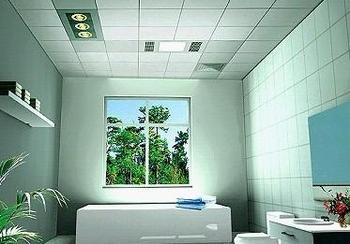 While peak seasons are crucial for long-term business growth, off-season sales strategies shouldn't be overlooked. In today’s competitive market, there are numerous brands offering integrated ceilings, and consumers have a wider range of choices than ever before. This increased competition means that businesses must find innovative ways to stand out, even during slower periods.
To succeed in off-season sales, it's essential to focus on the actual needs of your customers. Personalized service can make a big difference—by tailoring solutions to individual preferences, you create a more engaging and memorable experience. At the core of any integrated ceiling is its design. By paying close attention to aesthetics and functionality, you can better meet customer expectations and drive purchase decisions.
Before starting the design process, take the time to communicate with your clients. Ask about the dimensions and layout of their space, as well as their vision for the integrated ceiling. Understanding their preferred materials, color choices, and overall style helps ensure the final product aligns with their expectations. Also, consider functional requirements—such as where to place a ventilation fan near the toilet or a heater above the shower—to enhance user experience and practicality.
Color coordination is another important aspect of integrated ceiling design. The color of the ceiling should complement the rest of the room. For instance, if the floor tiles are dark, avoid using overly dark ceiling panels, as this can create an unbalanced look. Similarly, if the kitchen walls are light, a matching light-colored ceiling will provide a harmonious feel. It's also advisable to limit the number of colors used in the ceiling design—typically no more than three—to maintain a clean and organized appearance without overwhelming the space.
By focusing on personalization, functionality, and aesthetic harmony, you can turn off-season sales into an opportunity for growth and customer satisfaction.
While peak seasons are crucial for long-term business growth, off-season sales strategies shouldn't be overlooked. In today’s competitive market, there are numerous brands offering integrated ceilings, and consumers have a wider range of choices than ever before. This increased competition means that businesses must find innovative ways to stand out, even during slower periods.
To succeed in off-season sales, it's essential to focus on the actual needs of your customers. Personalized service can make a big difference—by tailoring solutions to individual preferences, you create a more engaging and memorable experience. At the core of any integrated ceiling is its design. By paying close attention to aesthetics and functionality, you can better meet customer expectations and drive purchase decisions.
Before starting the design process, take the time to communicate with your clients. Ask about the dimensions and layout of their space, as well as their vision for the integrated ceiling. Understanding their preferred materials, color choices, and overall style helps ensure the final product aligns with their expectations. Also, consider functional requirements—such as where to place a ventilation fan near the toilet or a heater above the shower—to enhance user experience and practicality.
Color coordination is another important aspect of integrated ceiling design. The color of the ceiling should complement the rest of the room. For instance, if the floor tiles are dark, avoid using overly dark ceiling panels, as this can create an unbalanced look. Similarly, if the kitchen walls are light, a matching light-colored ceiling will provide a harmonious feel. It's also advisable to limit the number of colors used in the ceiling design—typically no more than three—to maintain a clean and organized appearance without overwhelming the space.
By focusing on personalization, functionality, and aesthetic harmony, you can turn off-season sales into an opportunity for growth and customer satisfaction.A hydraulic hose is a flexible tube made of synthetic rubber, thermoplastic or reinforced with wire or textile braid. It is used to transmit hydraulic fluid under high pressure to various hydraulic components such as cylinders, valves, and pumps. Hydraulic hoses are designed to withstand high pressure, extreme temperatures, and various types of fluids, including oil, water, and hydraulic fluids. They are commonly used in industries such as construction, agriculture, mining, and manufacturing. Hydraulic hoses come in different sizes, lengths, and pressure ratings to suit different applications.
Hydraulic Hose,High Pressure Oil Pipe,High Pressure Oil Pipe Line,High Pressure Pumps Accessories
Yantai Dongyue Hydraulic Technology Co., Ltd , https://www.deeleap.com